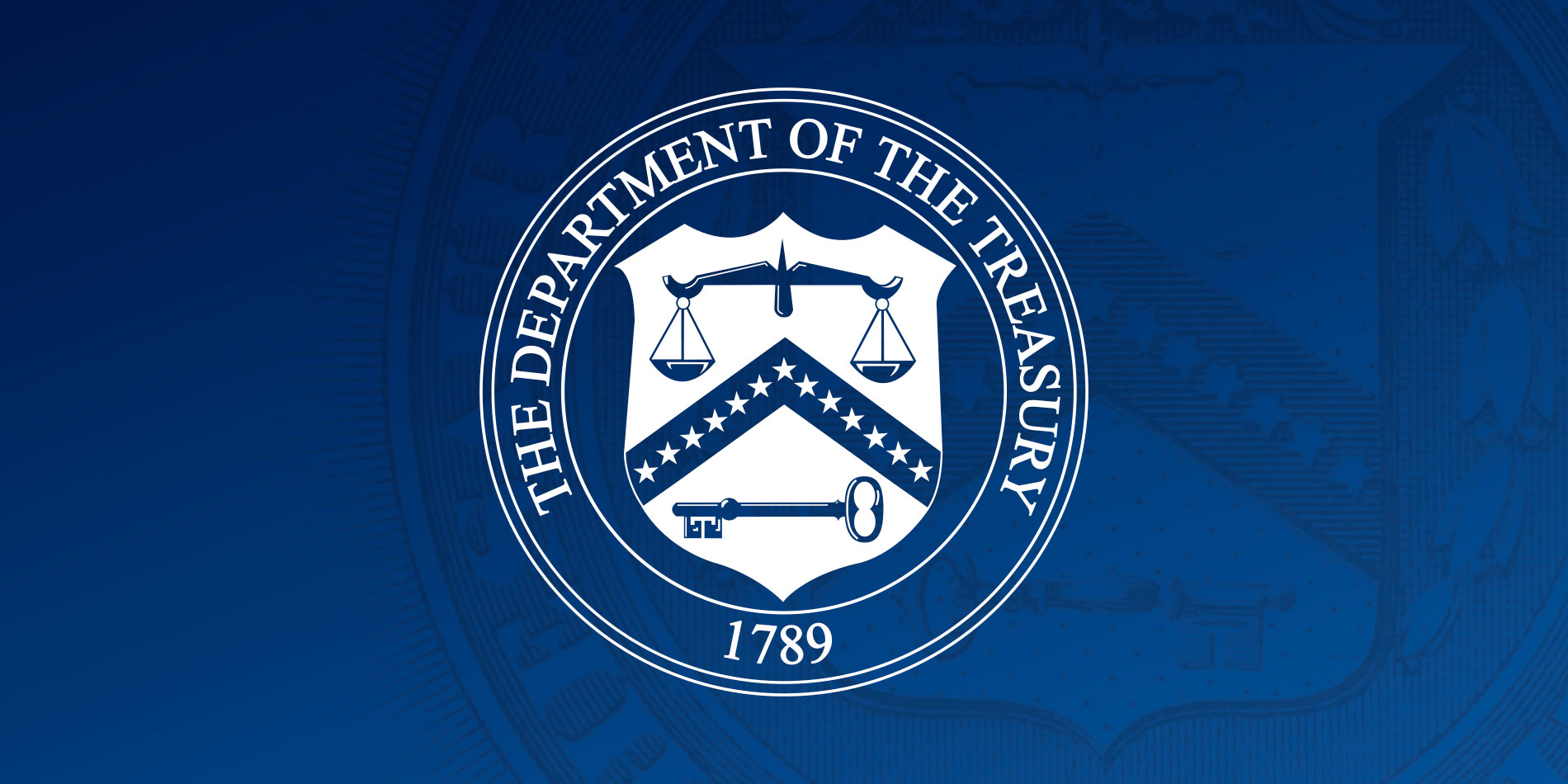Nearly 25% of new entrepreneurs in 2021 were Latino, the typical Latino employer saw 25% increase in revenues over the pandemic and recovery
WASHINGTON – Today, in recognition of Hispanic Heritage Month, the U.S. Department of the Treasury released a report card showing that Latino business ownership and revenues in the U.S. are up, and detailing how federal investments – including those from President Biden’s American Rescue Plan – are growing and sustaining Latino-owned businesses.
According to a report released last month by the Stanford Latino Entrepreneurship Initiative (SLEI), the U.S. is currently home to more than 62.5 million Latinos, representing 19% of the U.S. population. With an economic output of $2.8 trillion, there are approximately 5 million Latino-owned businesses across the U.S., generating more than $800 billion in annual revenue.
However, the COVID-19 pandemic caused disproportionate harm to Latino businesses and communities. At the height of the pandemic, Latinos were more likely to lose their jobs, more likely to work in front-line positions that increased their risk of exposure, and had among the highest mortality rates. Latino unemployment peaked at nearly 19 percent in 2020.
In addressing a post-pandemic recovery, the Biden-Harris Administration took significant steps to build a fairer economy. While there is more work to do, these efforts have led to the most equitable, broad-based economic recovery in modern history.
More Latino entrepreneurs are starting businesses
Beginning in 2020, there has been a lasting surge in business applications and startups. Average monthly business applications were 50% higher in 2021-2023 than in 2018-2019, and nearly 25% of all new entrepreneurs in 2021 were Latino. There is evidence that the rise in business applications has resulted in a greater percentage of Latino and Black businessowners, given that areas with a higher proportion of Latino and Black residents saw relatively larger increases in application rates in 2020.
Latino-owned businesses are earning greater revenues than before the pandemic; Latino workers are benefitting from higher wages, record low unemployment
Over the pandemic and recovery (2019-2022), the median growth rate in revenues was 25% for Latino employers. From 2019 to 2022, median weekly earnings increased 2.4% for Latino workers after accounting for inflation. At the same time, Latino unemployment hit a record low last September.
The number of self-employed Latino workers grew during the recovery
According to Treasury Department calculations based on monthly Current Population Survey data, the number of self-employed workers that were Latino or Black has grown significantly since 2019. The growth in Latino and Black Americans working for themselves far exceeds what has happened in previous economic recoveries.
- From 2019 to 2023, there was a 26% increase in the number of self-employed Latino workers in the United States.
- The share of Latino workers that are self-employed increased from 8.9% in the first 8 months of 2019 to 10.2% in the first 8 months of 2023.
In contrast, in the four years following the start of the Great Recession, the number of self-employed Latino workers fell, and rose only slightly for Black workers.
Federal programs helped spur and sustain the Latino small business boom
Americans – including Latino entrepreneurs – filed nearly 10.5 million applications to start new businesses in 2021 and 2022, the two highest years on record for new business formation. To sustain small business growth, record demand was met with new federal resources. For instance, in 2022, according to the aforementioned SLEI report, Latino-owned businesses were 50% more likely to request funding and financing than white-owned businesses, with plans to use the funds to expand their businesses, acquire additional capital assets, and meet operating expenses. The Treasury Department has taken a leading role in implementing programs and initiatives meant to support small businesses across all communities.
- The nearly $10 billion State Small Business Credit Initiative (SSBCI) – reauthorized and expanded by the American Rescue Plan – includes $2.5 billion in funding and incentive allocations to support the provision of capital to underserved businesses – with $1 billion of these funds to be awarded to jurisdictions that are successful in reaching underserved businesses.
- Through the Emergency Capital Investment Program (ECIP), the Treasury Department has invested $1.6 billion in Latino-designated minority depository institutions. In total, ECIP participant institutions received more than $8.5 billion in Treasury ECIP investments that may enable them to collectively increase lending in Latino communities by over $50 billion over the next decade.
- The Treasury Department prioritized equity in its spending guidelines for the American Rescue Plan’s State and Local Fiscal Recovery Fund (SLFRF) – the largest-ever infusion of direct pay to state, local, and Tribal governments. To address both the disproportionate impacts of the pandemic and historic underinvestment that left some communities more vulnerable, the Department provided a broad menu of services to enhance health, housing, employment, and economic equity in low-income and high poverty communities.
- To boost workers and small businesses across the Island, the American Rescue Plan significantly expanded Puerto Rico’s version of the Earned Income Tax Credit (EITC), quadrupling benefits for workers through the first federal enhancement to Puerto Rico’s EITC since the credit was established nearly 50 years ago.
- Procurement with government agencies plays an important role for many minority-owned businesses. At the Treasury Department, there has been a 23% increase in the dollar amount of prime contracts awarded to Latino-owned businesses since FY 2020. The Department has also designated two minority-owned financial institutions as financial agents of the government.
Real businesses are seeing real results
- The Latino Connection (TLC), based in Harrisburg, Pennsylvania, is a consultancy focused primarily on outreach and education initiatives to support underserved communities, with a mission to educate, empower, and uplift the Latino community. This year, the company hit a growth milestone when it acquired another firm – a merger that will allow TLC to add marketing and communications business lines to its roster of services. However, this meant the company needed a new space in order to better serve clients and attract new customers. Struggling to receive a loan from a traditional bank, TLC turned to Capital Region Economic Development Corp. (CREDC), a nonprofit community economic development organization participating in the Pennsylvania Department of Community and Economic Development’s State Small Business Credit Initiative (SSBCI) loan participation program. Using federal SSBCI funds leveraged by private credit issued to purchase the real estate, CREDC was able to design a credit-enhanced deal of $250,000 to support renovation and fit out of the space, the hub of the growing TLC. Melissa Stone, Vice President of Economic Development with CREDC, noted the important role that the SSBCI dollars played in this transaction, and in others: “SSBCI helps us to ‘tick’ the credit boxes on transactions that we really want to do, and otherwise, wouldn’t be able to close.”
- Washington, D.C. invested nearly $40 million of its SLFRF funds in DC’s Bridge Fund 2.0, which made investments in small businesses in the community, including a $75,000 grant to Peruvian Brothers. Founded by Mario and Giuseppe Lanzone, two brothers who grew up in Peru’s coastal La Punta district, Peruvian Brothers focuses on dishes that the brothers miss most from their childhood. The business started as a food truck, joining the city’s then-nascent food truck scene. It has since expanded into three food trucks, a catering operation, and a food stall location in the Latin American market called La Cosecha which features cooking talent from many South American countries.
- The Asian Financial Corporation, based in Philadelphia, Pennsylvania, is a recipient of the Treasury Department’s Emergency Capital Investment Program funding, and created and offered a new loan product and financial service, titled Small Business Booster Loans (SSBL), to underserved business owners either as a term loan or line of credit. Examples of loans granted over the course of the pandemic recovery include:
- In October 2022, the SSBL Program made a $50,000 loan to a Latino-owned cleaning service to purchase additional equipment and software, allowing the owners to run a more efficient business.
- In June 2023, the SSBL Program made a $30,000 working capital loan to a Latino-owned truck repair business, allowing the owners to replace higher priced debt with bank debt and fund the purchase of new equipment.
- In September 2023, the SSBL Program made a $100,000 to a Latino-owned restaurant to replace aging kitchen equipment.
###
On October 19, the 2022 Survey of Consumer Finances will be released, which will have its first comprehensive post-pandemic read of business ownership by race. These findings will be among the topics discussed at the Treasury Department’s Freedman’s Bank Forum on October 25. Media wishing to attend can RSVP to [email protected].
Official news published at https://home.treasury.gov/news/press-releases/jy1798


